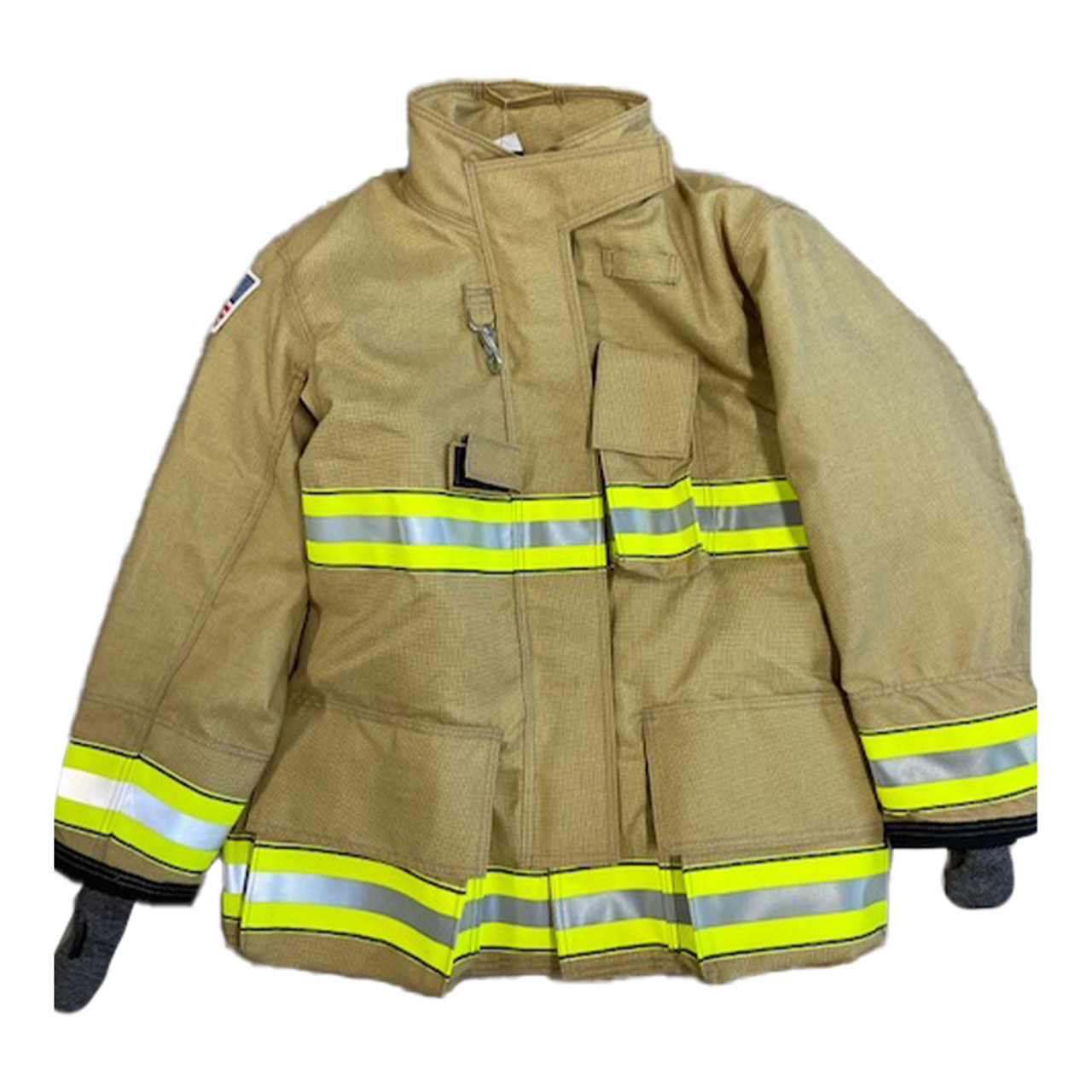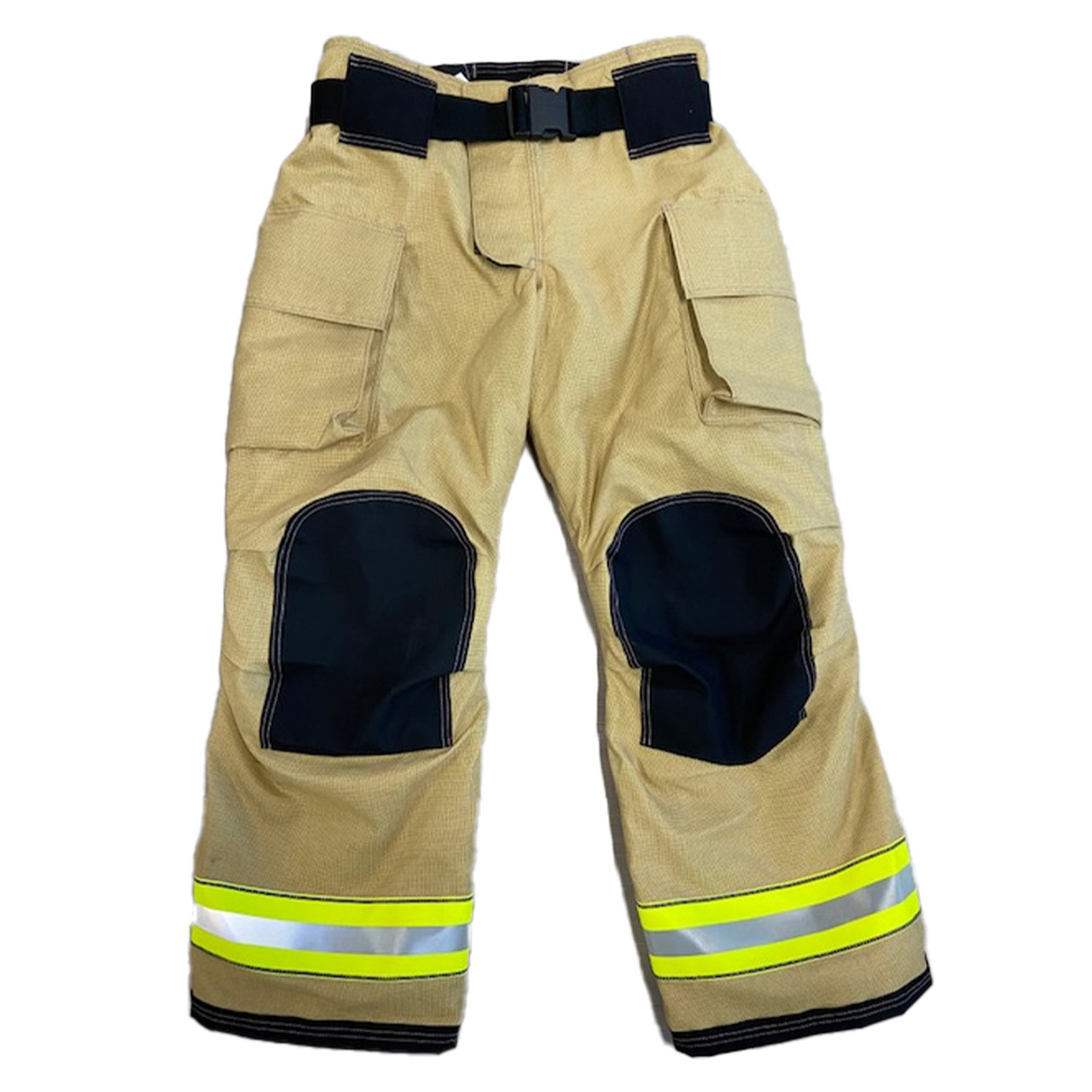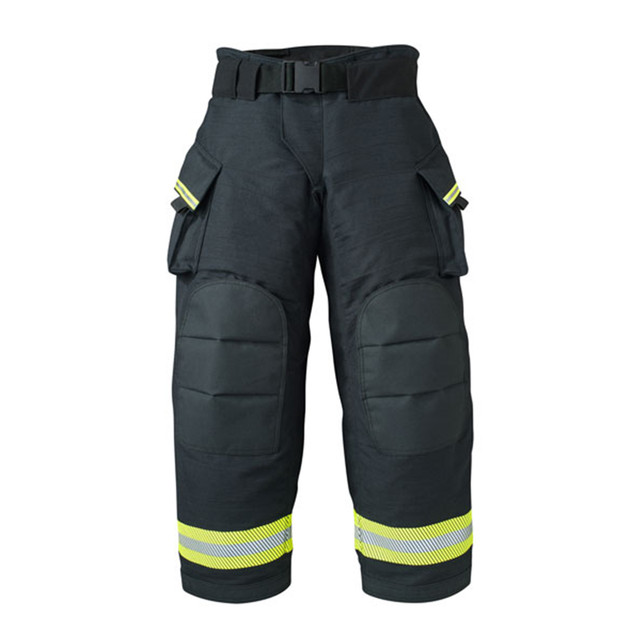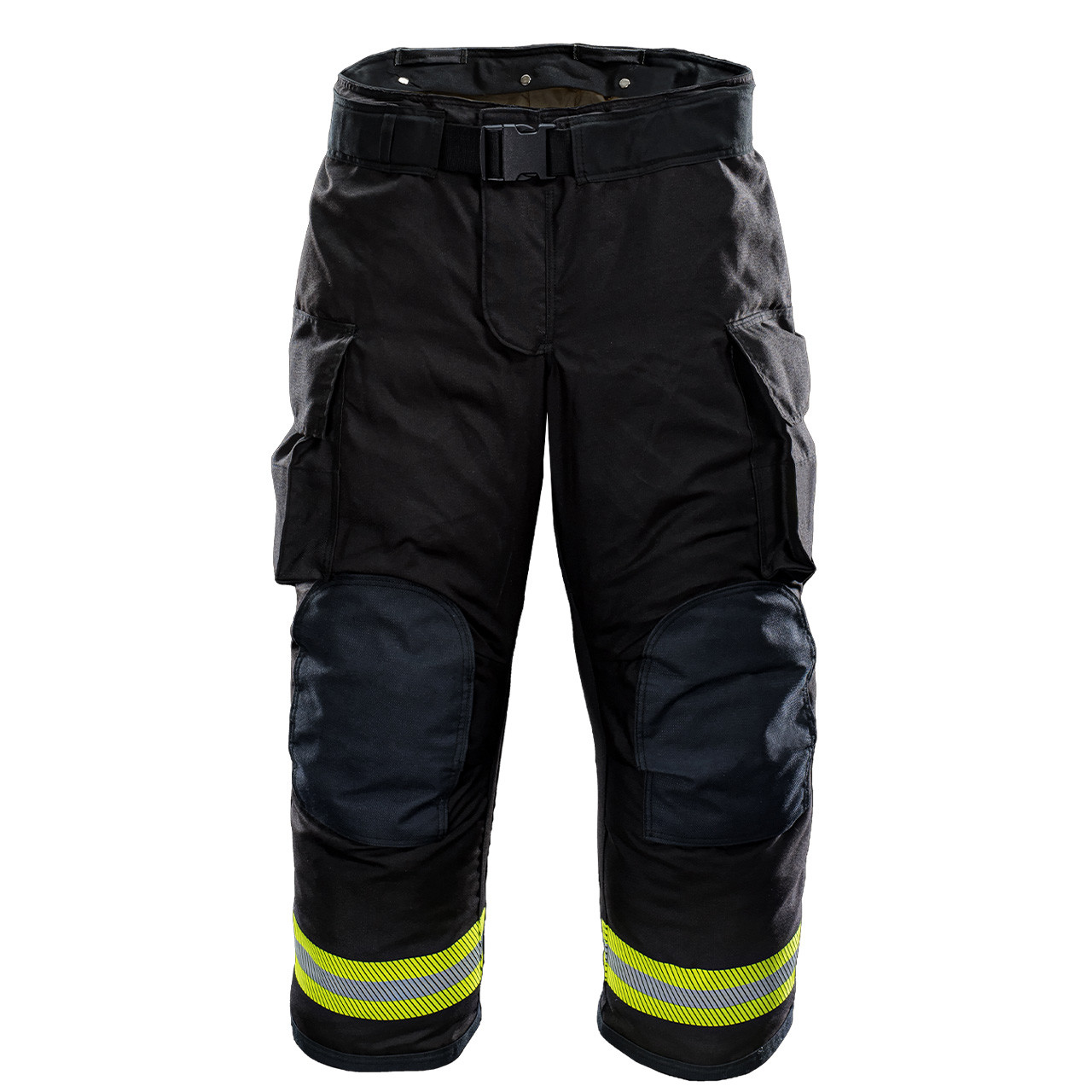How to Properly Fit Turnout Gear for Firefighters
Aug 2nd 2023
Does your turnout gear not fit properly? Long pant legs or sleeves? Loose jackets that get caught or slow you down by making it harder to move?
The last thing a firefighter wants to worry about when dealing with a structure fire is limited mobility due to ill-fitting turnout gear. Firefighter turnout gear should fit the wearer to a tee, allowing them to walk, run, crouch, and bend unhindered. Properly fitted fire turnout gear ensures safety against extreme heat, flames, smoke, and harmful particulates in the air while providing the wearer with the most freedom of movement possible.
Because of the specialized construction of firefighter turnout gear, taking measurements to find the right size is crucial to proper fitting.
Firefighters need their turnout coat and pants to fit correctly to complement their helmet, hood, gloves, boots, and SCBA, so accurate measurements determine how well or poorly their turnout gear fits.
If you’re asking, “How do you measure firefighter turnout gear,” you’ve come to the right place. Below, you’ll find step-by-step guides on how to measure for firefighter turnout coats and pants.
How to Measure for a Firefighter Turnout Jacket
Learning how to properly fit turnout gear for firefighters starts by measuring for the turnout coat. Turnout coats require measurements for the chest or bust area, stomach, back, and sleeve length. When taking measurements of a firefighter with a particularly muscular build, additional measuring can include around the biceps.
One of the most critical notations to make during measurements for a turnout jacket is the length of the coat while the firefighter is in different positions. Fire fighting turnout coats should extend at least 2 inches over the pants, regardless of whether the firefighter is standing, sitting, crouching, bending, or crawling.
Learn how to properly fit a firefighter turnout jacket or coat below.
Measure the Torso
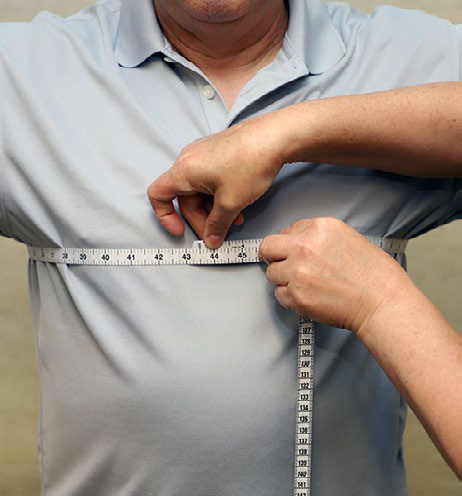
The torso consists of a firefighter’s chest and stomach, the sizes of which help ensure full coverage when wearing their turnout coat.
1. Have the firefighter raise their arms at a 90-degree angle to their body, then instruct them to take a deep breath and hold it.
2. Wrap the measuring tape around their chest or bust, then have them lower their arms.
3. Place two fingers beneath the measuring tape and loosen the tape to fit comfortably.
3. After writing down that measurement, measure around the widest part of the firefighter’s stomach, again placing two fingers beneath the tape.
4. Use the widest measurement as the chest measurement for the turnout coat.
Measure Over the Arms
Measuring over the arms helps determine the proper sizing needed for a firefighter’s turnout coat. Firefighters with a heavily-muscled physique especially benefit from this additional measurement.
1. Have the firefighter stand relaxed with their arms by their sides, then take and hold a deep breath.
2. Determine the widest point on the firefighter, then measure around their arms and chest as one measurement.
3. Use the aforementioned two-finger method to provide extra allowance in the coat size.
Measure the Sleeves
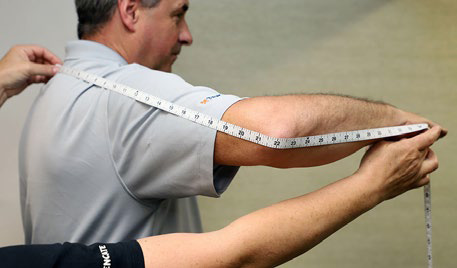
Turnout coat sleeve measurements ensure that the sleeves will fit well with the outfit’s gloves, providing the best protection for a firefighter’s hands and arms during a structure fire. While, in many cases, sleeve measurements can safely correspond with the chest size of the turnout coat, it’s still helpful to measure for sleeve length in the case of longer or shorter arm sizes.
1. The firefighter should put their arm back down by their side and relax, keeping their arm straight and not flexing at the elbow.
2. Place the measuring tape at the firefighter’s base of the neck against the vertebra that exists there.
3. Bring the measuring tape down along the exterior of the firefighter’s arm.
4. Measure in this manner to the base of the firefighter’s thumb.
5. Add an inch or so to the measurement, ensuring that it’s a single number with no halves, quarters, or smaller inch increments - longer is better when it comes to sleeve measurements.
6. To ensure you have the best measurement, change the firefighter’s arm position to one in which they flex their elbow and use their hand to grab their belt buckle. Use the same measuring method - from neck base to thumb base, following the contour of the arm - to find the best measurement that allows for maximum sleeve mobility.
Measure the Back
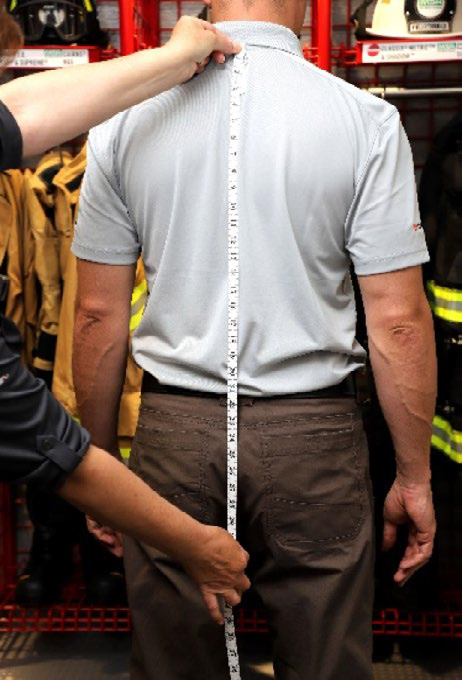
The back of a firefighter’s turnout coat must extend far enough down to cover the waist of the firefighter’s pants, regardless of the position.
1. Have the firefighter stand straight up with their arms relaxed at their sides.
2. Starting at the C-5 vertebra, measure along the firefighter’s spine to their pant’s waist seam. (If unsure about the vertebra location, you can start measuring at the seam of the firefighter’s shirt collar.)
3. Have the firefighter bend slightly forward and keep your measuring tape at the same length to ensure that the back of the coat will provide ample coverage even in that position. Remember, the coat should extend at least 2 inches beyond a firefighter’s pants.
Measure the Shoulder
Firefighters need their turnout coats to fit comfortably over the shoulders. Too tight, and they may have restricted movements; too large, and the coat could slide off at inopportune times.
1. Have the firefighter stand, arms relaxed at their sides, with shoulders back and spine straight.
2. Place the tip of the measuring tape at the base of the firefighter’s neck.
3. Measure across the shoulder to the tip of the shoulder bone.
Measure the Biceps
Biceps vary in size, making it essential to determine whether a sleeve needs to be wider at the bicep or can sit at a typical size.
1. Have the firefighter stand relaxed, then flex their arm at the elbow and bring the arm up at a little less than a 90-degree angle to their body.
2. Ask the firefighter to tense their bicep.
3. Measure around the bicep at the widest point, placing two fingers between the tape and their arm and loosening until comfortable.
How to Measure for Firefighter Turnout Pants
Correctly measuring for fire turnout pants ensures that firefighters feel comfortable around the waist, whether running or crawling. Properly fitted pants also need to feel good around the thighs and knees, while the hems of the pants shouldn’t drag, get caught under firefighter boots, or ride up far enough to expose the firefighter’s legs to heat, flames, or smoke.
Measure the Waist
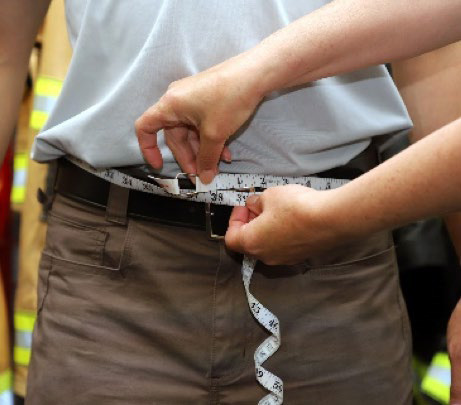
The waist of firefighter turnout pants can fall if they’re too loose or cause uncomfortable constriction if made too tight. Before getting the turnout pants measurement, have the firefighter arrange their pants in their preferred place on their torso.
1. Wrap the measuring tape around the waist of the firefighter, then pull until the measuring tape rests lightly over the shirt, pants, and belt (if applicable).
2. Place one finger underneath the measuring tape and loosen until comfortable.
3. Have the firefighter bend over, sit, and lean in different directions, ensuring that the measuring tape doesn’t tighten uncomfortably during any of these movements. If it does, loosen it until the measuring tape feels comfortable.
4. Have the firefighter stand straight again. If the measuring tape feels too loose, tighten it slightly and try again until the firefighter can stand straight up or bend over and feel comfortable in both positions.
Measure the Hips - Women Firefighters Only
|
Women firefighters need to have the proper hip measurement for their turnout pants. Only measuring the waist can cause pants to be sized improperly, creating problems with restricted movement and discomfort. 1. Have the female firefighter stand relaxed with her back straight. 2. Locate the widest part of her hips and measure around that section. |
Measure the Inseam
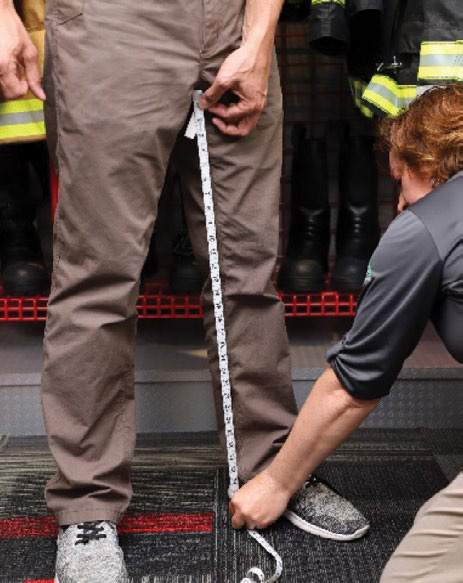
The inseam of fire turnout pants allows the manufacturer to properly size the interior leg length of the pants, making them more comfortable to wear. Make sure the firefighter wears the shoes he or she will most likely wear with their turnout pants.
1. Give the firefighter the end of the tape measure, then place it next to the inner seam of the crotch of the pants they are currently wearing.
2. Measure from that point to about one inch off the floor, holding the tape tight along the inside of the leg.
Shop for the Top Firefighting Turnout Gear on Curtis - Tools for Heroes
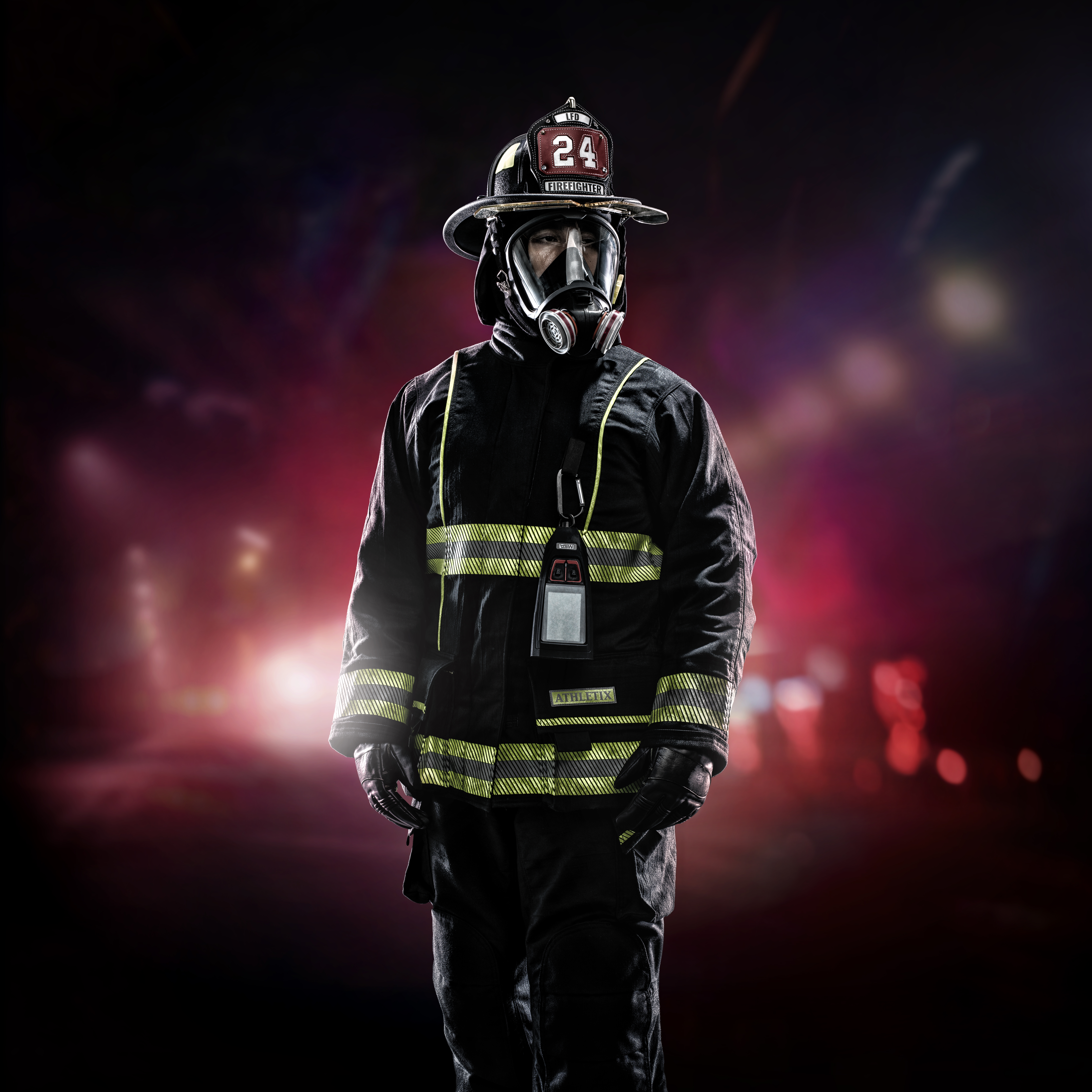
At Curtis - Tools for Heroes, we understand the importance of properly fitting firefighter turnout gear. We’ve partnered exclusively with Globe to provide fire departments and independent firefighters with the best firefighting turnout gear possible. Agencies looking for the best-fitting firefighter PPE can schedule a turnout gear sizing with one of Curtis’s Sales Representatives or PPE Specialists.
Globe offers firefighters plenty of options to help them size out the most comfortable turnout pants and coats possible. As exclusive Globe turnout gear providers, we sometimes use sizing sets provided by Globe instead of a measuring tape to provide the best fit.
How to Measure for Globe Firefighter Turnout Gear
Are you shopping for Globe turnout gear specifically, such as what you’ll find on the Curtis -Tools for Heroes online store? You can use many of the measurements above to get the right measurements, but with a few additional steps to ensure the best fit, including:
Asking for the Firefighter’s Height
The total height of a firefighter may account for variations in their Globe jacket and pant sizes, so take this figure into account during measurements and decision-making.
Chest Measurements
While using the above measuring guide for chest measurements, you should also ask if the firefighter wears extra layers beneath their clothes during colder weather. If so, going a size up for a Globe turnout jacket size can ensure a better fit.
Also consider whether the firefighter will wear internal harness pants, as a straight-fit jacket will work better than other styles.
Back Measurements
For Globe back measurements, firefighters should assume two positions:
- Standing with their back straight and their hands reaching as high as possible over their head.
- Standing with their hands overhead while leaning forward at a 90-degree angle, then to either side, then back as far as possible.
Measurements taken in these positions ensure that your Globe firefighter turnout jacket will cover you at the 2” minimum overlap required by the NFPA 1500.
Waist Measurements
When measuring for Globe turnout pants, firefighters should keep in mind any items they typically wear beneath their turnout jackets, such as knives, radios, or phones. If a firefighter normally wears these items, they should be in their pockets or on their belt loops during the waist measurements.
To remain compliant with NFPA 1971, Globe pant waist sizes come in even increments, so whenever a measurement comes out to an odd number, it should be rounded up to the next size.
Hip Measurements
Women’s Globe pants have approximately 12” more room at the hip than the waist.
Men’s hip measurements are approximately 6” larger on most styles, while the Globe CLASSIX pants measure 11” inches larger.
For wide variations between the expected hip and waist size, some adjustments may be made as needed to the fit of your Globe pants.
Inseam Measurements
Globe pant lengths always size out in even increments. To avoid tripping or dragging your pants, if your inseam measurement is an odd number, round down to the next even one so long as proper overlap remains between the pants and boots.
Some of our most popular Globe firefighter turnout pants include:
Globe ATHLETIX Pants
These innovative pants provide the closest fit possible combined with less bulkiness, improving your mobility and flexibility. They’re constructed using Kombat Stretch PBI/Kevlar and Nomex Nano, materials that improve the pants’ comfort and safety by being thinner, lighter, more breathable, and quicker drying.
Other features include a banded inseam design that allows better all-around stretch, articulated knees with built-in Silizone knee pads for better protection while crawling, and a reverse boot cut design that lengthens cuff life.
Globe Pant System
The Globe Pant System wears like a pair of your favorite jeans, with different fits including Slim, Regular, Relaxed, and Women’s. Firefighters will enjoy better comfort and mobility along with the many features of these pants, including optional Silizone knee padding, cargo pockets lined with KEVLAR, an independent stretch waistband for better range of motion, and double-stitched seams designed to increase the lifetime of your pants.
These pants also offer various options to make these pants your own, including:
Closures
- Tunnel with half-belt
- Full belt with wide belt loops
- Escape belt with wide belt loops
- Hook and dee with take-up straps
Materials
- Outer shells
- Moisture barriers
- Thermal liners
- Reinforcements
- Reflective trim
Check out our Globe turnout gear, or learn more about setting up an Agency account for your department that offers plenty of handy benefits.
Already Know Your Turnout Gear Size?
Curtis has Globe Response Ready turnout gear in stock:
Globe Response Ready Gold 7.0 PBI Max G-Xtreme 3.0 Tapered Jacket
Globe Gold 7.0 PBI Max GPS Response Ready Pants
Globe Response Ready Black 7.0 PBI Max G-Xtreme 3.0 Tapered Coat
Globe Black 7.0 PBI Max GPS Response Ready Pants
**All images in this blog come from MSA Globe, our exclusive turnout gear provider at Curtis - Tools for Heroes


